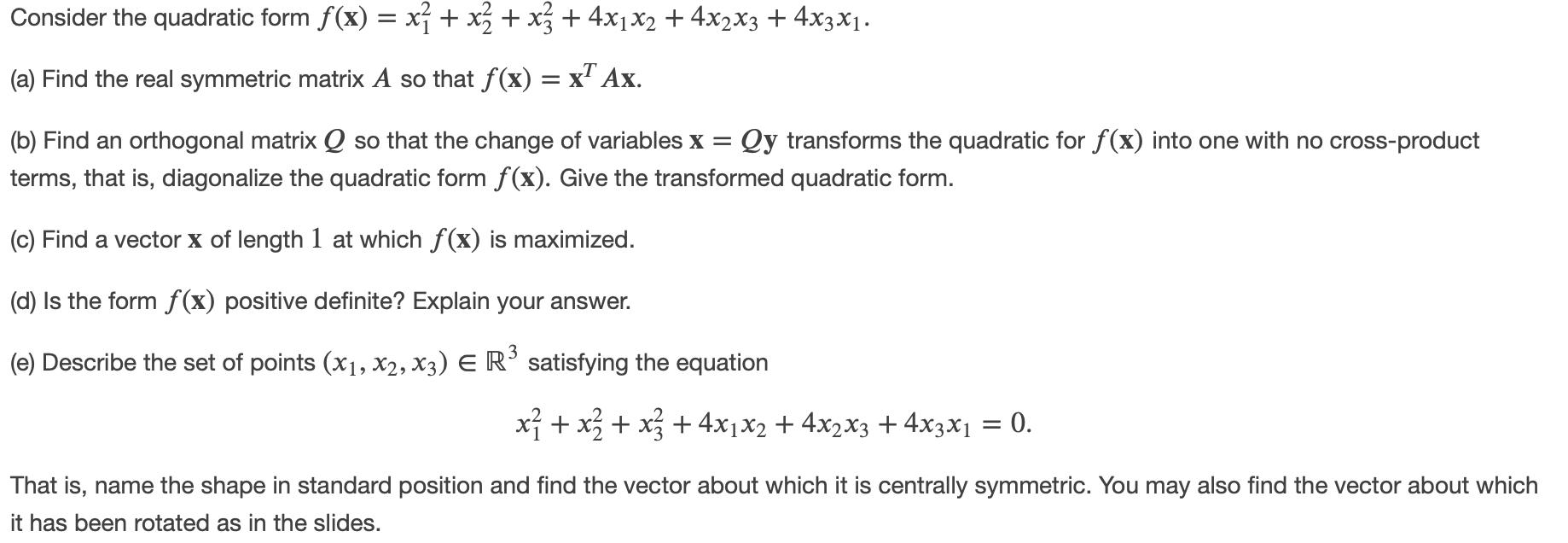Answered step by step
Verified Expert Solution
Question
1 Approved Answer
Consider the quadratic form f(x) = x + x3 + x3 + 4x1X2 + 4x2x3 + 4x3x1. (a) Find the real symmetric matrix A

Consider the quadratic form f(x) = x + x3 + x3 + 4x1X2 + 4x2x3 + 4x3x1. (a) Find the real symmetric matrix A so that f(x) = x' Ax. (b) Find an orthogonal matrix Q so that the change of variables x = Qy transforms the quadratic for f(x) into one with no cross-product terms, that is, diagonalize the quadratic form f(x). Give the transformed quadratic form. (c) Find a vector x of length 1 at which f(x) is maximized. (d) Is the form f(x) positive definite? Explain your answer. (e) Describe the set of points (x1, X2, X3) E R satisfying the equation x + x3 + x3 + 4x1x2 + 4x2x3 + 4x3X1 = 0. That is, name the shape in standard position and find the vector about which it is centrally symmetric. You may also find the vector about which it has been rotated as in the slides.
Step by Step Solution
★★★★★
3.34 Rating (160 Votes )
There are 3 Steps involved in it
Step: 1
Given that O2 22 2 42x 4 432 3 2 2 ...
Get Instant Access to Expert-Tailored Solutions
See step-by-step solutions with expert insights and AI powered tools for academic success
Step: 2

Step: 3

Ace Your Homework with AI
Get the answers you need in no time with our AI-driven, step-by-step assistance
Get Started


